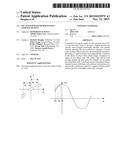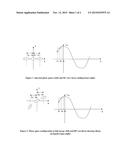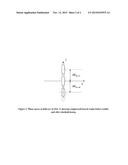Patent application title: FEL System with Homogeneous Average Output
Inventors:
David R. Douglas (Yorktown, VA, US)
Robert Legg (Newport News, VA, US)
R. Roy Whitney (Newport News, VA, US)
R. Roy Whitney (Newport News, VA, US)
George Neil (Williamsburg, VA, US)
Thomas Joseph Powers (Poquoson, VA, US)
IPC8 Class: AH01S309FI
USPC Class:
372 2
Class name: Coherent light generators free electron laser
Publication date: 2015-11-12
Patent application number: 20150325975
Abstract:
A method of varying the output of a free electron laser (FEL) on very
short time scales to produce a slightly broader, but smooth,
time-averaged wavelength spectrum. The method includes injecting into an
accelerator a sequence of bunch trains at phase offsets from crest.
Accelerating the particles to full energy to result in distinct and
independently controlled, by the choice of phase offset, phase-energy
correlations or chirps on each bunch train. The earlier trains will be
more strongly chirped, the later trains less chirped. For an energy
recovered linac (ERL), the beam may be recirculated using a transport
system with linear and nonlinear momentum compactions M56, which are
selected to compress all three bunch trains at the FEL with higher order
terms managed.Claims:
1. A method for varying the output of a free electron laser (FEL) on very
short time scales to produce a slightly broader and smooth time-averaged
wavelength spectrum, comprising: a. injecting a plurality of individual
bunch trains at slightly different phases relative to crest of the linac
RF waveform; b. accelerating to full energy to produce distinct and
independently controlled phase-energy correlations on each bunch train
with earlier trains more strongly chirped and the trains less chirped;
and c. recirculating the beam using a transport system with linear and
nonlinear momentum compactions.
2. The method of claim 1 wherein the FEL is an energy-recovered linac; further comprising recirculating all exhaust bunch trains for energy recovery; and applying linear and nonlinear compactions of recovery arc and energy/phase separations on the sequence of bunch trains to generate energy compression during energy recovery and provide clean transport to a beam dump.
3. The method of claim 2, wherein recirculating the beam using a transport system with linear and nonlinear momentum compactions, further comprises compressing all bunch trains at the FEL with higher order terms.
4. A method for varying the output of a free electron laser (FEL) on very short time scales to produce a slightly broader and smooth time-averaged wavelength spectrum, comprising: producing a plurality of temporally coincident bunches at similar but different energies at the FEL; producing light of a slightly different wavelength in each of said bunches; and injecting a single bunch train while varying the phase offset to smooth the output of the FEL.
5. The method of claim 4, further comprising timing the coincident bunches relative to the crest will vary between that of the original trains to smooth the average output of the FEL.
6. The method of claim 1, further comprising injecting the plurality of individual bunch trains at a frequency of at least kHz to produce a smooth time-averaged wavelength spectrum having a very short time scale.
Description:
CROSS-REFERENCE TO RELATED APPLICATIONS
[0001] This application claims the priority of Provisional U.S. Patent Application Ser. No. 61/991,925 filed May 12, 2014.
FIELD OF THE INVENTION
[0003] The present invention relates to charged particle beams and more particularly to a method of varying the output of a free electron laser (FEL) on very short time scales to produce a slightly broader, but smooth, time-averaged wavelength spectrum.
BACKGROUND OF THE INVENTION
[0004] Depending on system architecture FELs typically do, on a drive-electron-bunch-by-bunch basis, produce "noisy" wavelength output, which is detrimental to the beam quality.
[0005] Accordingly, it would be desirable to reduce the "noise" and produce a slightly broader, but smooth, time-averaged wavelength spectrum.
OBJECT OF THE INVENTION
[0006] It is therefore an object of the present invention to reduce the "noise" in the wavelength output of an FEL.
[0007] A further object of the invention is to improve the beam quality of an FEL operating on a drive-electron-bunch-by-bunch basis.
[0008] A further object is to provide an FEL output beam that includes a slightly broader, smoother, time-averaged wavelength spectrum.
[0009] Yet another object of the invention is to provide a method that will, in a single beamline, provide independent control of multiple bunch trains and thereby allow rapid variation of output wavelength
BRIEF SUMMARY OF THE INVENTION
[0010] The current invention includes a method of varying the output of a free electron laser (FEL) on very short time scales to produce a slightly broader, but smooth, time-averaged wavelength spectrum. The method includes injecting into an accelerator a sequence of bunch trains at phase offsets from crest. Accelerating the particles to full energy to result in distinct and independently controlled, by the choice of phase offset, phase-energy correlations or chirps on each bunch train. The earlier trains will be more strongly chirped, the later trains less chirped. For an energy recovered linac (ERL), the beam may be recirculated using a transport system with linear and nonlinear momentum compactions M56 and T566, which are selected to compress all three bunch trains at the FEL with higher order terms managed.
BRIEF DESCRIPTION OF THE DRAWINGS
[0011] FIG. 1 includes plots of the injected phase spaces (left) and the RF wave form configuration (right).
[0012] FIG. 2 includes plots of the phase space configuration at full energy (left) and RF waveform showing chirps on bunch trains (right).
[0013] FIG. 3 depicts the phase space at delivery to the FEL showing compressed bunch trains before (solid) and after (dashed) lasing.
DETAILED DESCRIPTION OF THE INVENTION
[0014] The current invention includes a method of varying the output of a free electron laser (FEL) on very short time scales to produce a slightly broader, but smooth, time-averaged wavelength spectrum.
[0015] The method will, in a single beamline, provide independent control of multiple bunch trains and thereby allow rapid variation of output wavelength. This method is based on the nonlinear longitudinal matching methods and large-acceptance beam transport systems now in use at Jefferson Lab, Newport News, Va., and is motivated by the observation that--when using these methods--very modest changes in beam energy (well under 1 MeV) can turn lasing off and on by varying compressed bunch length. This demonstrates that easily generated and managed variations in phase/energy correlation across a bunch train is an effective control for laser turn-on/off.
[0016] The method is as follows:
[0017] 1. Inject into the accelerator a sequence of bunch trains (A, B, C, . . . ; A earliest in time, B following, C later still . . . ) at phase offsets φA, φB, φC, . . . from crest (see FIG. 1).
[0018] 2. Accelerate to full energy. This will result in distinct and independently controlled (by the choice of phase offset) phase-energy correlations ("chirps") on each bunch train. (see FIG. 2). The earlier trains will be more strongly chirped, the later trains less chirped.
[0019] 3. Recirculate the beam using a transport system with linear and nonlinear momentum compactions M56 (see equation[1] below), T566, (and, if needed, W5666, U56666, . . . ) selected to compress all three bunch trains at the FEL (see FIG. 3) with higher order terms.
[0019] M56=(λRF/(2π))(Efull/ΔElinac)(- 1/sin φB) [1]
wherein:
[0020] M56 is the momentum compaction
[0021] λRF is the wavelength of the accelerating frequency
[0022] Efull is the full energy spread
[0023] Elinac is the maximum energy gain
[0024] φB is the phase difference between the bunches
[0025] 4. If applied in an Energy-Recovered Linac (ERL), recirculate all exhaust bunch trains for energy recovery, using linear and nonlinear compactions of recovery arc and energy/phase separations of bunch trains to generate energy compression during energy recovery and provide clean transport to the beam dump.
[0026] As shown in FIG. 3, the above method will produce three temporally coincident bunches at nearby--but different--energies at the FEL (see FIG. 3). Each bunch will therefore produce light of a slightly different wavelength.
[0027] By construction, the entire phase space region subtended by the three bunch trains depicted in FIG. 3 will lase, though each individual bunch train (subregion) will produce a different output wavelength, as a result of the different energy, and the individual bunch output may be "noisy" in spectrum or power. It can be smoothed by a slight alteration of the process as described thus far. Instead of injecting three individual bunch trains at slightly different phases relative to crest of the linac RF waveform, inject instead a single bunch train while varying the phase offset. In this case, the timing of individual bunches relative to the crest will vary between that of the original trains A and C; the energy will vary commensurately, and though individual bunches may produce "noisy" output, over time (10s or 100s of bunches) the average output will be smoothed.
[0028] According to another embodiment of the invention, the injection phase (output wavelength) variations can be performed on RF time scales (100s of kHz or MHz), so that the "smooth time average" will be manifested on time scales of kHz, 10s of kHz, or shorter.
[0029] Bunch trains can be parsed on energy and chirp, and can be independently controlled in phase relationship and final energy by either a) injection of the bunch trains at a single energy and acceleration at different phases to somewhat different final energies, or by b) injecting multiple energies and operating at phase separations that produce compensatory offsets of the central energies of all bunch trains--resulting in a set of bunch trains at common energy but with differing chirp. Such chirp variations can also be used to control energy extraction from individual bunches, and thereby provide an additional parameter for smoothing and broadening of the output wavelength and power.
[0030] The description of the present invention has been presented for purposes of illustration and description, but is not intended to be exhaustive or limited to the invention in the form disclosed. Many modifications and variations will be apparent to those of ordinary skill in the art without departing from the scope and spirit of the invention. The embodiments herein were chosen and described in order to best explain the principles of the invention and the practical application, and to enable others of ordinary skill in the art to understand the invention for various embodiments with various modifications as are suited to the particular use contemplated.
User Contributions:
Comment about this patent or add new information about this topic:



